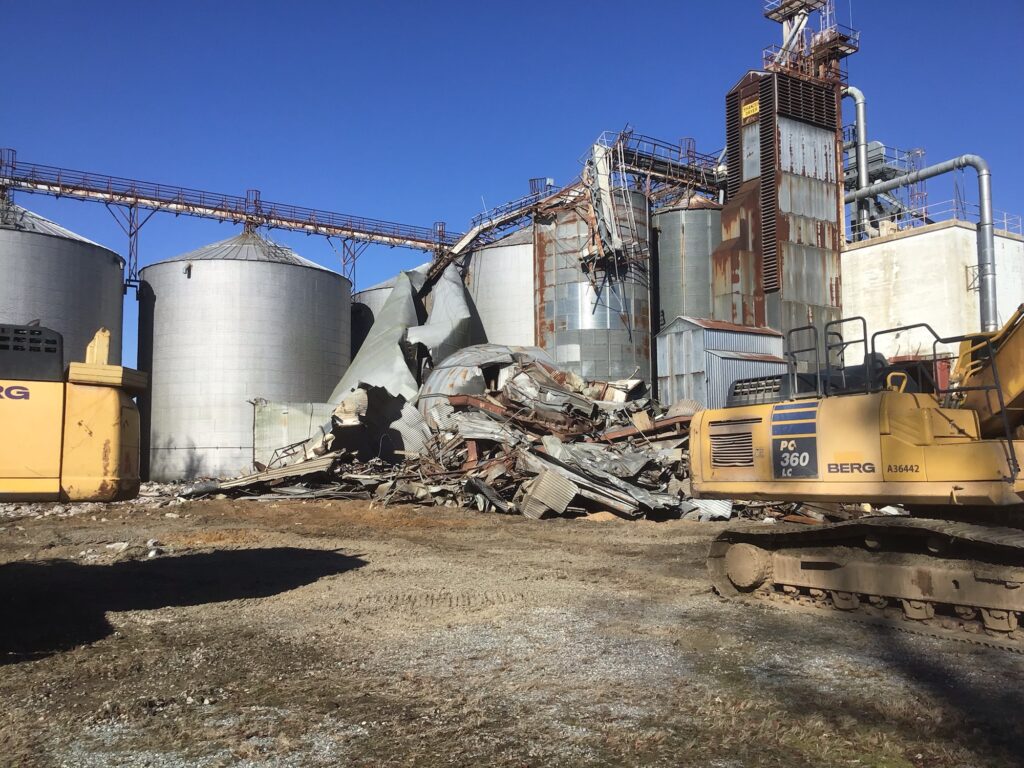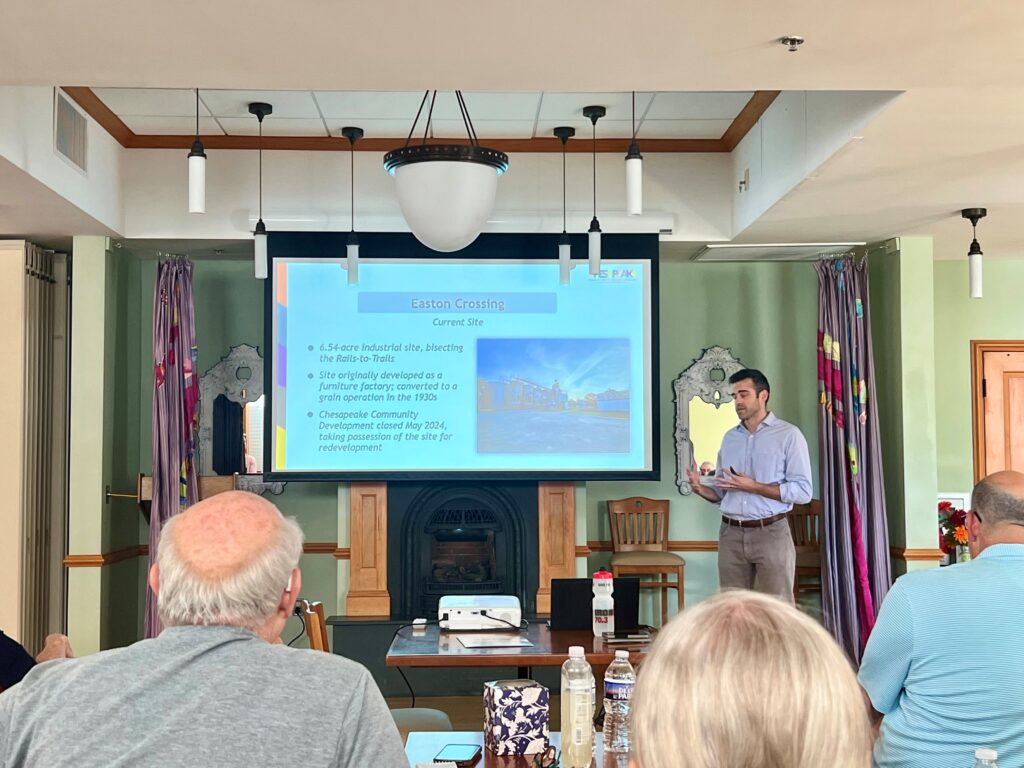Chesapeake Community Development’s work is about more than constructing buildings. It’s about creating communities where everyone belongs and fostering vibrant, resilient neighborhoods that are equitable, accessible, and inclusive. Through innovative projects and a commitment to listening to the needs of local communities, Chesapeake Community Development is building the infrastructure for a better future – one where people with intellectual and developmental disabilities can live the lives they choose in communities that are inclusive and welcoming.
What is Chesapeake Community Development?
Founded in 2021 by The Arc Central Chesapeake Region (The Arc), Chesapeake Community Development actively works to make our communities the inclusive, accessible, and diverse places we believe they should be. While The Arc’s work is rooted in creating opportunities for inclusion for people with intellectual and developmental disabilities, Chesapeake Community Development focuses on developing communities where everyone has access to housing, resources, and opportunities for economic self-sufficiency. Chesapeake Community Development shares The Arc’s vision that people with intellectual and developmental disabilities should live the lives they choose in communities that are equitable, accessible, and fully inclusive. That shared vision is the foundation of our unique approach and why we believe truly inclusive communities don’t leave anything—or anyone—out.
“As community leaders, we believe it is our responsibility to create the housing opportunities our communities already know they need,” said Ross Benincasa, Senior Vice President of Community Development for Chesapeake Community Development. “While our work began with providing housing to people with intellectual and developmental disabilities, our vision has always been to bring that same level of person-centered, customized access to housing to everyone in our communities.”
Building for the Future
Chesapeake Community Development has grown significantly and currently has more than 180 units slated to be completed by 2030. In addition to the people and families already living in a Chesapeake Community Development home, that means that well over 200 families will be living in a home built by Chesapeake Community Development within the next 5 years.
Just as every community looks different and has its own needs, the housing Chesapeake Community Development creates varies from urban-style apartments to single-family homes, townhomes, duplexes, and triplexes. While some properties under development are larger communities like Easton Crossing and Silo Court, many of Chesapeake Community Development’s units are small, scattered-site, mixed-income housing with developments located in established neighborhoods, downtown districts, and more secluded, rural areas.
One recently completed development is Port Street Commons, which opened in November 2024. Port Street Commons is a 24,000-square-foot mixed-use space that includes offices, community spaces, and affordable housing all under one roof, meeting the diverse needs of the community it is located in. Port Street Commons includes both The Arc at Port Street, the new headquarters for The Arc Central Chesapeake Region, and The Residences at Port Street, nine affordable housing units for moderate-income families featuring accessible designs and modern amenities.
“All too often, communities try to address issues around affordable housing, support services, and creating new jobs separately, but these issues are all interrelated,” said Jonathon Rondeau, President & CEO of The Arc. “We believe our solutions must reflect that complexity, and Port Street Commons addresses these overlapping community issues because it is not just a place to live or work or receive support – it is all three.”
Chesapeake Community Development has a robust pipeline of development projects that reflects our goal of creating more accessible communities that provide housing, resources, and opportunities for economic self-sufficiency. From small-scale, scattered-site housing to transformative mixed-use developments, Chesapeake Community Development is leading the way in creating communities that work for everyone.
What’s Next for Chesapeake Community Development
Chesapeake Community Development has a host of new properties in the pipeline, all of which are part of our mission and vision of building vibrant, inclusive communities where everyone can thrive.
The Laura House: Preserving History, Creating Opportunity
Set in the heart of downtown Easton, Maryland, The Laura House exemplifies Chesapeake Community Development’s approach to blending historic preservation with modern housing solutions. This 5,500-square-foot historic property on August Street is being transformed into seven two-bedroom apartment units.
The Laura House is part of our small-scale, scattered-site approach, which integrates affordable housing into established neighborhoods rather than concentrating it in one area. This method provides high-quality housing, strengthens community ties, and ensures inclusivity. Once completed, The Laura House will offer comfortable, accessible living spaces, enriching Easton’s vibrant downtown. Laura House is estimated to open in the Spring of 2025
Nursery Road: Accessible Living for All
Accessibility and independence are at the heart of Chesapeake Community Development’s work, and the upcoming Nursery Road project in Linthicum, Maryland, reflects Chesapeake Community Development’s commitment to those core values. Construction on this single-family home is set to begin in Spring 2025, and the design prioritizes accessibility from the ground up.
Featuring three bedrooms and two bathrooms, all on one level, this home will provide a fully accessible living space for people with disabilities served by The Arc. Nursery Road is more than just a home—it’s a testament to what’s possible when accessibility meets opportunity, ensuring everyone has a chance to flourish.
Easton Crossing: A Vision for the Future
Perhaps the most ambitious project in Chesapeake Community Development’s pipeline is Easton Crossing, a transformative mixed-use development that will reshape a 6.5-acre former grain silo site in Easton, Maryland. This project has been crafted with community input from multiple public meetings to gather feedback and ensure alignment with local needs and values.
Scheduled to break ground in 2026, Easton Crossing will feature approximately 140 residential units, with 30% designated as affordable housing and 70% as market-rate. By blending diverse housing options, the development will address Easton’s pressing need for more inclusive, accessible living spaces.
But Easton Crossing is about more than housing. The development will include 20,000 square feet of commercial space along the Rail-to-Trails pathway in Easton, creating opportunities for economic growth and community connection. Open green spaces, a fishing pond, a dog walking trail, and recreational amenities will make this a true community hub, enhancing the quality of life for residents and visitors alike.
Join Us in Creating Inclusive Communities
At Chesapeake Community Development, we believe in building with the community, not just for it. That’s why projects like Easton Crossing incorporate extensive community feedback, ensuring our developments meet real needs and reflect the aspirations of local residents. This collaborative approach is what makes Chesapeake Community Development’s work unique and impactful.
From the thoughtful design of developments like The Laura House to the accessibility-first approach of Nursery Road and the transformative vision of Easton Crossing, Chesapeake Community Development is leading the charge to create inclusive, equitable communities.
Together, we can build neighborhoods that embody dignity, independence, and opportunity for all. Learn more about our work and how you can support these projects to help create a brighter future.























